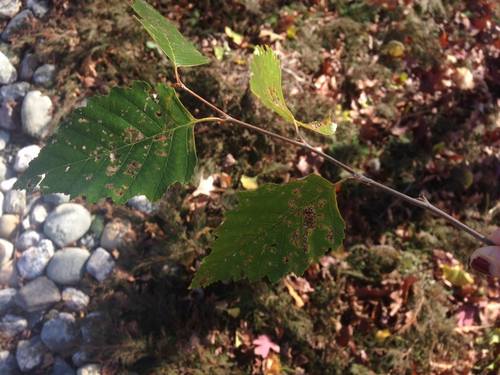River Birch : Natural History and Other Important Characteristics
The river birch is native to the Eastern United States, and ranges from as far north as New Hampshire to as far south as northern Florida, and west to Minnesota and Texas. Most other birches do not have this wide of a range, as they do not adapt well to warmer climates. The river birch is uniquely culturally adaptable and heat tolerant. It thrives in damp soil, but also can do very well in drier soil, especially dry soil that gets flooded every spring, as it would get near a river. It grows tallest in the damp areas of the south, especially along the Mississippi river. The river birch requires full sunlight and does best in soils with a pH of 6.5 to 4. As well as being the most culturally adaptable, the river birch is also the most disease resistant. It is the only species of birch that is resistant to the incredibly harmful disease, birch borer. It is also very resistant to air pollution, and some river birches sprung up in Central Park. For these reasons, a cultivar of the river birch called Heritage was named the 2002 Urban Tree of the Year by the Society of Municipal Arborists. The tree is susceptible to aphids, however they do not cause lasting or permanent damage. The river birch can become susceptible to disease if pruned in the spring. The river birch is a “bleeder” and open wounds cause heavy sap flow that is attractive to some beetles, and wound dressing is ineffective. River birches must be pruned only in the fall when the tree is dormant. This tree is also considered very messy. It sheds twigs all year, and during the spring pollen can become a nuisance, as with other wind-pollinating trees. Due to the shallow roots of the river birch, it is difficult to grow other plants underneath the tree after it is well established. River birches are also known to shed their leaves in very dry conditions as a way of conserving water.
Cultivars of Betula nigra are only recently becoming popular as botanists and arborists realize the benefits of the unique adaptability of this tree. There are a few dwarf versions of the river birch, including “Little King” or the Fox Valley River Birch, and “Tecumseh Compact” which is more of a shrub than a tree. Dura-Heat river birches come from Georgia, and are especially good at thriving in southern heat. Researchers have noted that strongly weeping river birches can be found, and predict that they will soon be found in nurseries. The original river birch cultivar, “Heritage” was released by Earl Cully and is considered the most impressive river birch cultivar. It is known for its disease- resistant leaves, good form and hardiness, and aesthetically notable beige bark that peels to reveal pure white inner bark.


